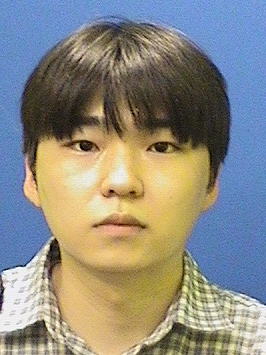
Hanan Dery
Professor of Electrical and Computer Engineering
PhD, Technion - Israel Institute of Technology, 2004
- Office Location
- 410 Computer Studies Building
- Telephone
- (585) 275-3870
Short Biography
Hanan Dery, a specialist in the physics of semiconductors, joined the Department of Electrical and Computer Engineering in July, 2007. Previously, he was a postdoctoral associate in Lu Sham's group in the Department of Physics, University of California San Diego (UCSD). During this time, he worked on spintronics, seeking ways to integrate information based on electron spin into semiconductors. Dery earned his PhD in electrical engineering from Technion-Israel Institute of Technology in 2004. His PhD research was in optoelectronic nanostructure devices with a focus on nonlinear gain processes and carrier dynamic properties.
Research Overview
We are a theory group with interest in the physics of excitons (bound electron-hole pairs), spin-polarized electrons, and spin/valley interactions in semiconductors. Our focus since 2013 is on atomically thin monolayer semiconductors. Below, we provide five synopses of our research results since 2020 .
Roles of exciton-electron and trion-electron interactions in WSe2 monolayers
We have presented photoluminescence measurements in monolayer WSe2, performed by our collaborators in Toulouse, which point to the importance of the interaction between charged particles and excitonic complexes. Our theoretical analysis highlights the key role played by exchange scattering, referring to cases wherein the particle composition of the complex changes after the interaction. For example, exchange scattering renders bright excitonic complexes dark in monolayer WSe2 on accounts of the unique valley-spin configuration in this material. In addition to the ultrafast energy relaxation of hot excitonic complexes following their interaction with electrons or holes, our analysis sheds light on several key features that are commonly seen in the photoluminescence of this monolayer semiconductor. We can understand why the photoluminescence intensity of the neutral bright exciton is strongest when the monolayer is hole doped rather than charge neutral or electron doped. Similarly, we can understand the reason for the dramatic increase of the photoluminescence intensity of negatively charged excitons (trions) as soon as electrons are added to the monolayer. To self-consistently explain the findings, we have further studied the photoluminescence spectra at different excitation energies and analyze the behavior of the elusive indirect exciton.
Ref: Phys. Rev. B. 105, 085302 (2022)
Hexciton and Oxcitons in monolayer transition-metal dichalcogenides
In the archetypal monolayer semiconductor WSe2, the distinct ordering of spin-polarized valleys (low-energy pockets) in the conduction band allows for studies of not only simple neutral excitons and charged excitons (i.e., trions), but also more complex many-body states that are predicted at higher electron densities. We have analyzed magneto-optical measurements of electron-rich WSe2 monolayers, performed by our collaborators, and interpret the spectral lines that emerge at high electron doping as optical transitions of six-body exciton states (“hexcitons”) and eight-body exciton states (“oxcitons”). These many-body states emerge when a photoexcited electron-hole pair interacts simultaneously with multiple Fermi seas, each having distinguishable spin and valley quantum numbers. In addition, we have explained the relations between dark trions and satellite optical transitions of hexcitons in the photoluminescence spectrum.
Ref: Phys. Rev. Lett. 129, 076801 (2022)
Composite excitonic states in doped semiconductors
We have presented a theoretical model of composite excitonic states in doped semiconductors. Many-body interactions between a photoexcited electron-hole pair and the electron gas are integrated into a computationally tractable few-body problem, solved by the variational method. We focused on electron-doped monolayer (ML)-MoSe2 and ML-WSe2 due to the contrasting character of their conduction bands. In both cases, the core of the composite is a tightly bound trion (two electrons and a valence-band hole) surrounded by a region depleted of electrons. The composite in ML-WSe2 further includes a satellite electron with different quantum numbers. The
theory is general and can be applied to semiconductors with various energy-band properties, allowing one to calculate their excitonic states and to quantify the interaction with the Fermi sea.
Ref: Phys. Rev. B. 106 L081301 (2022)
Measurement of conduction and valence bands g-factors in a TMD Monolayer
Together with our experimental collaborators in Toulouse, we have developed an original technique to measure the g-factors of electrons and holes in WSe2. The method exploits the optical selection rules of exciton complexes, in particular the ones involving intervalley phonons, avoiding strong renormalization effects that compromise single particle g-factor determination in transport experiments.
Ref: Phys. Rev. Lett. 126, 067403 (2021)
Zone edge phonons and exciton complexes in WSe2 monolayers
Together with our experimental collaborators in Seattle, we have provided the physical origin for a myriad of optical transitions in WSe2 monolayers. The identification relies on the the coupling between spin, charge, and lattice degrees of freedom plays. We have reported and analyzed the observation of multiple valley phonons – phonons with momentum vectors pointing to the corners of the hexagonal Brillouin zone – and the resulting exciton complexes in the WSe2 monolayers. We found that these valley phonons lead to efficient intervalley scattering of quasi particles in both exciton formation and relaxation, leading to a series of photoluminescence peaks as valley phonon replicas of dark trions. Using identified valley phonons, we also uncover an intervalley exciton near charge neutrality. Our work not only identifies several previously unknown 2D excitonic species, but also shows that monolayer WSe2 is a prime candidate for studying interactions between spin, pseudospin, and zone-edge phonons.
Ref: Nature communications 11, 618 (2022).
Publications
Papers (2020-2022)
Intervalley electron-hole exchange interaction and impurity-assisted recombination of indirect excitons in WS2 and WSe2 monolayers
Li, C. Robert, D. V. Tuan, L. Ren, M. Yang, X. Marie, and H. Dery, PRB 106, 085414 (2022).
Six-body and eight-body exciton states in monolayer WSe2
V. Tuan, S.-F. Shi, X. Xu, S. A. Crooker, and H. Dery, PRL 129, 076801 (2022).
Composite excitonic states in doped semiconductors
V. Tuan and H. Dery, PRB 106, L081301 (2022).
Relaxation and darkening of excitonic complexes in electrostatically dopedmonolayer WSe2: Roles of exciton-electron and trion-electron interactions
Yang et al., PRB 105, 085302 (2022).
Spin/Valley pumping of resident electrons in WSe2 and WS2 monolayers
Robert et al., Nature Commun. 12, 5455 (2021).
Measurement of conduction and valence bands g-factors in a TMD monolayer,
Robert et al., PRL 126, 067403 (2021).
Intrinsic donor-bound excitons in ultraclean monolayer semiconductors
Rivera et al., Nature Commun. 12, 871 (2021).
Exciton valley depolarization in monolayer transition-metal dichalcogenides
Yang et al., PRB 101, 115307 (2020).
Valley phonons and exciton complexes in a monolayer semiconductor
He et al., Nature Commun. 11, 618 (2020).
Magnetic field mixing and splitting of bright and dark excitons in monolayer MoSe2.
Lu et al., 2D Mater. 7, 015017 (2020).
Selected Papers (2007-2019)
Dynamical screening in monolayer TMDs and its manifestations in the exciton spectrum.
By Benedict Scharf, Dinh Van Tuan, Igor Zutic, and Hanan Dery (2019).
Probing many-body interactions in monolayer transition-metal dichalcogenides.
By Dinh Van Tuan et al. (2019).
Virtual trions in the photoluminescence of monolayer transition-metal dichalcogenides.
By Dinh Van Tuan, Aaron M. Jones, Xiaodong Xu, and Hanan Dery (2019).
Coulomb interaction in monolayer transition-metal dichalcogenides.
By Dinh Van Tuan, Min Yang, and Hanan Dery (2018).
Marrying excitons and plasmons in monolayer transition-metal dichalcogenides.
By Dinh Van Tuan, Benedikt Scharf, Igor Zutic, and Hanan Dery (2017).
A two-dimensional spin field-effect switch.
By Wenjing Yan et al. (2016).
Excitonic luminescence upconversion in a two-dimensional semiconductor.
By Aaron M. Jones, et al. (2016).
Polarization analysis of excitons in monolayer and bilayer transition-metal dichalcogenides.
By Hanan Dery and Yang Song (2015).
Magnetic field modulated resonant tunneling in ferromagnetic-insulator-nonmagnetic junctions.
By Yang Song and Hanan Dery (2014).
Impurity-assisted tunneling magnetoresistance under a weak magnetic field.
By O. Txoperena et al. (2014).
Donor-driven spin relaxation in multivalley semiconductors.
By Yang Song, Oleg Chalaev, and Hanan Dery (2014).
Anisotropy-driven spin relaxation in germanium.
By Pengke Li, Jing Li, Lan Qing, Hanan Dery, and Ian Appelbaum (2013).
Transport theory of monolayer transition-metal dichalcogenides through symmetry.
By Yang Song and Hanan Dery (2013).
Optical spin injection and spin lifetime in Ge heterostructures.
By Fabio Pezzoli et al. (2012).
Intrinsic spin lifetime of conduction electrons in germanium.
By Pengke Li, Yang Song, and Hanan Dery (2012).
Analysis of phonon-induced spin relaxation processes in silicon.
By Yang Song and Hanan Dery (2012).
Spin-orbit symmetries of conduction electrons in silicon.
By Pengke Li and Hanan Dery (2011).
Theory of spin-dependent phonon-assisted optical transitions in silicon.
By Pengke Li and Hanan Dery (2010).
Spin based logic in semiconductors for reconfigurable large scale circuits.
By Hanan Dery, Lukasz Cywinski, Parin Dalal, and Lu J. Sham (2007).
People
Future Members
We are a theory group (zilch experiments). New members are added based on funding availability.
- Post-doctoral scholars who are interested in joining our group should have a Ph.D. in topics related to our research (e.g., condensed matter physics, spintronics, transition-metal dichalcogenides).
- Students who are interested in joining our group as Ph.D. candidates should be skillful in math and have background in quantum mechanics (e.g., taking a course on the subject).
Current Members

Junghwan Kim (Luke)
PhD candidate, Electrical and Computer Engineering
Office: CSB 409
Email: jkim392 at ur , Rochester , edu
 Tuan Van Dinh
Tuan Van Dinh
Assistant Research Professor (2022 – To date)
Office: CSB 411
Email: vdinh at ur dot rochester dot edu
Ph.D. Students - Graduated
Min Yang, ECE (2021)
Lan Qing. Physics (2015)
Yang Song, Physics (2013)
Pengke Li, ECE (2013)
Previous Post-Doctoral Scholars
Dr. Yang Song (2013-2015)
Dr. Oleg Shalaev (2013-2017)
Dr. Dinh Van Tuan (2016-2020)
